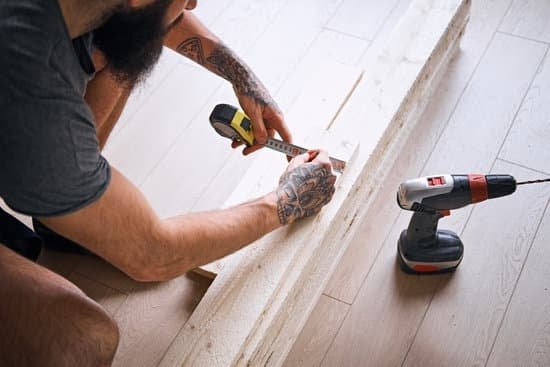Are you a beginner looking to embark on small DIY woodworking projects? Whether you’re interested in creating something for yourself or as a gift for someone else, there are plenty of simple and fun projects to get started with. From small shelves to decorative items, the possibilities are endless when it comes to small DIY woodworking projects.
With just a few tools and some creativity, you can create beautiful and functional pieces that will impress your friends and family. In this article, we will provide you with step-by-step instructions, safety tips, and creative ideas for your next small DIY woodworking project. We will also discuss the benefits of these projects for beginners and showcase some inspiring examples to get your creative juices flowing.
So if you’re ready to roll up your sleeves and get crafting, read on to learn more about how to get started with small DIY woodworking projects. Get ready to unleash your creativity while enhancing your woodworking skills. Whether you’re a novice or have some experience under your belt, there’s something in this article for everyone who has an interest in small DIY woodworking projects.
Tools Needed for Small DIY Woodworking Projects
When it comes to taking on small DIY woodworking projects, having the right tools is essential. While the specific tools you’ll need can vary depending on the project, there are a few basic items that every woodworker should have in their toolkit.
One of the most important tools for small DIY woodworking projects is a saw. Whether it’s a hand saw, circular saw, or miter saw, having a reliable cutting tool is crucial for achieving clean and precise cuts. A power drill is another must-have item, as it will be used for drilling pilot holes, driving screws, and more.
In addition to cutting and drilling tools, having measuring and marking tools like a tape measure, combination square, and pencil is essential for ensuring accuracy in your small DIY woodworking projects. Clamps are also indispensable for holding pieces together while glue dries or when assembling parts before securing them with screws or nails.
Lastly, don’t forget about safety equipment such as safety goggles, ear protection, and a dust mask to protect yourself while working on your small DIY woodworking projects.
| Tool | Description |
|---|---|
| Saw | A cutting tool used for making precise cuts in wood |
| Power Drill | An electric tool used for drilling holes and driving screws |
| Tape Measure | A flexible ruler used for measuring length and width of wood pieces |
| Clamps | Used to hold pieces of wood together firmly during gluing or assembly process |
Choosing the Right Wood for Your Small DIY Woodworking Project
When it comes to small DIY woodworking projects, choosing the right type of wood is crucial to the success and durability of your project. Different types of wood have different characteristics that can impact the final outcome of your project, from its appearance to its strength and ease of workability.
One popular choice for small DIY woodworking projects is pine. It’s readily available, affordable, easy to work with, and takes stains and finishes well. However, it’s not the most durable option and may not be suitable for outdoor projects or items that will receive a lot of wear and tear.
Another popular choice is oak, known for its strength and durability. It’s a bit more expensive than pine but has a beautiful grain pattern that adds character to any project. Oak can be more difficult to work with due to its density, but the end result is often worth the extra effort.
For a more budget-friendly option, consider plywood. It’s made by gluing together thin layers of wood veneer, making it strong and resistant to warping or shrinking. Plywood is available in different grades and finishes, making it versatile for a variety of small DIY woodworking projects.
| Type of Wood | Characteristics |
|---|---|
| Pine | Readily available, affordable, easy to work with. |
| Oak | Known for strength and durability; beautiful grain pattern. |
| Plywood | Strong, resistant to warping or shrinking; versatile for various projects. |
Step-by-Step Instructions for a Small DIY Woodworking Project
Gathering Materials and Tools
Before you begin your small DIY woodworking project, it is important to gather all the necessary materials and tools. Depending on the project, you may need items such as wood glue, screws, nails, sandpaper, a saw, a drill, a measuring tape, and clamps. Make sure to have everything organized and readily available before starting.
Following a Clear Plan
Once you have all your materials and tools in place, it’s essential to follow a clear plan for your small DIY woodworking project. This includes having detailed measurements for the wood pieces, knowing how they will fit together, and understanding the order in which each step needs to be completed. Having a clear plan will help avoid mistakes and ensure that the project turns out as intended.
Applying Finishing Touches
After completing the main construction of your small DIY woodworking project, it’s time to apply any finishing touches. This can include sanding down rough edges, applying paint or stain for a polished look, and adding any decorative elements if desired. Taking the time to complete these finishing touches will enhance the overall appearance of your project.
By following these step-by-step instructions for your small DIY woodworking project, you’ll be able to create something unique and handmade with pride. Whether it’s a simple shelf or a small table, these projects are not only satisfying to complete but also serve as great opportunities for honing your woodworking skills.
Safety Tips for Small DIY Woodworking Projects
Woodworking can be a fun and rewarding hobby, but it’s important to prioritize safety when working with tools and materials. Here are some key safety tips to keep in mind when embarking on small DIY woodworking projects:
- Wear appropriate safety gear: Before starting any project, make sure to wear safety goggles, ear protection, and a dust mask to protect yourself from flying debris and harmful fumes.
- Keep your work area tidy: Cluttered workspaces can increase the risk of accidents. Keep your work area clean and organized, and always put tools away when they are not in use.
- Use tools properly: Familiarize yourself with each tool’s proper usage and always follow the manufacturer’s instructions. This includes using tools like saws, drills, and sanders.
- Avoid distractions: Concentration is key when working with power tools. Avoid distractions and stay focused on the task at hand to prevent accidents.
It’s crucial to prioritize safety to ensure an enjoyable woodworking experience without any accidents or injuries. By following these safety tips, you can create beautiful small DIY woodworking projects while keeping yourself out of harm’s way.
Remember that taking the necessary precautions will allow you to fully enjoy your woodworking experience while staying safe at all times. Happy woodworking.
Creative Ideas for Small DIY Woodworking Projects
Are you looking for creative ideas for small DIY woodworking projects? Whether you are a beginner or experienced woodworker, there are endless possibilities for fun and practical projects to tackle. Here are some creative ideas to inspire your next small DIY woodworking project:
- Hanging Wall Shelves: Create stylish and functional hanging wall shelves using simple wood planks and brackets. These can be customized to fit any space and can serve as a great way to display decorative items or organize small belongings.
- Wooden Smartphone Stand: Craft a custom wooden smartphone stand that not only looks great on your desk or bedside table but also provides a convenient spot to rest your phone while it charges or when watching videos.
- Rustic Wooden Coasters: Cut small wooden discs and add a touch of creativity by painting them with unique designs. These homemade coasters make for charming additions to any home décor and are also perfect for gifting.
The key to successful small DIY woodworking projects is to start with simple yet practical ideas that align with your skill level and personal taste. With the right tools, materials, and a bit of creativity, you can bring these projects to life in no time.
Remember, the beauty of small DIY woodworking projects lies in their simplicity and functionality. They provide an excellent opportunity to hone your woodworking skills while creating useful items for yourself or others. So, roll up your sleeves, gather your tools, and get ready to unleash your creativity with these engaging woodworking ideas.
Tips for Finishing and Sealing Your Small DIY Woodworking Project
When it comes to finishing and sealing your small DIY woodworking project, there are a few tips and techniques that can help you achieve professional-looking results. Whether you’re working on a simple shelf or a decorative trinket, the finishing touches can make all the difference in the final product.
Choosing the Right Finish
There are many different types of finishes available for woodworking projects, including stain, paint, varnish, and shellac. Each type of finish has its own unique qualities and benefits, so it’s important to consider the look and durability you want for your project.
If you’re looking for a natural wood look, a clear varnish might be the best option. On the other hand, if you want to add color or depth to your project, a wood stain could be the way to go.
Applying the Finish
Once you’ve chosen the right finish for your small DIY woodworking project, it’s important to apply it properly for the best results. Make sure to carefully read and follow the manufacturer’s instructions for application techniques and drying times. Additionally, using high-quality brushes or applicators can help ensure an even and smooth application of the finish.
Sealing Your Project
After applying the finish, it’s crucial to seal your project to protect it from moisture, dust, and other environmental factors. Depending on the type of finish you’ve used, sealing can involve applying a topcoat or sealer over the finish layer. This extra step will not only enhance the appearance of your project but also prolong its lifespan.
By following these tips for finishing and sealing your small DIY woodworking project, you can take your craftsmanship to the next level and create stunning pieces that will stand out in any setting. Remember that patience and attention to detail are key when it comes to achieving professional-looking results in woodworking projects.
Showcase of Small DIY Woodworking Projects for Inspiration
Looking for inspiration for your next small DIY woodworking project? Look no further. We’ve compiled a showcase of small DIY woodworking projects to inspire you and get your creative juices flowing. Whether you’re a beginner or a seasoned woodworker, these projects are perfect for honing your skills and creating beautiful, practical items for your home.
One popular small DIY woodworking project is the classic wooden picture frame. With just a few pieces of wood, some basic tools, and a little creativity, you can create custom frames for your favorite photos or artwork. Not only are these frames a great way to showcase your memories, but they also make excellent gifts for friends and family.
If you’re looking to add some stylish storage solutions to your home, consider building a small floating shelf. These sleek and modern shelves can be customized to fit any space, making them perfect for displaying decorative items or storing essentials in a small room. With the right tools and materials, you can easily transform plain wooden boards into eye-catching floating shelves that will impress anyone who sees them.
For those with furry friends at home, consider building a pet feeding station as your next small DIY woodworking project. This practical and functional item will not only elevate your pet’s dining experience but also add a touch of elegance to your home decor. Plus, it’s a fun project that allows you to tailor the design to suit the needs of your specific pet.
With these creative ideas and inspiration from our showcase of small DIY woodworking projects, you’ll be well on your way to creating beautiful and useful items for your home. So gather your tools and get ready to bring these projects to life.
Benefits of Small DIY Woodworking Projects for Beginners
In conclusion, small DIY woodworking projects offer a multitude of benefits for beginners. Not only do they provide an opportunity to learn new skills and techniques, but they also allow for a sense of accomplishment and pride in creating something with your own hands.
These projects can be a great way to start honing your woodworking abilities before moving on to larger, more complex ventures. Additionally, small DIY woodworking projects can be a cost-effective and practical way to furnish your living space with custom-made items that fit your personal style and needs.
Engaging in small DIY woodworking projects is not only a creative outlet but also a therapeutic activity that can reduce stress and promote mindfulness. By focusing on the details of the project, beginners can find themselves immersed in the process, leading to a sense of relaxation and satisfaction. Furthermore, these projects provide an opportunity for individuals to bond with friends or family members over a shared interest in crafting and creating.
Beyond personal enjoyment, small DIY woodworking projects can also be turned into potential sources of income for beginners who become skilled at their craft. Whether it’s selling handmade wooden furniture or decorative items at local craft fairs or through online platforms, these projects have the potential to turn into profitable ventures.
Overall, engaging in small DIY woodworking projects offers numerous advantages for beginners looking to develop their skills, express their creativity, and potentially even generate income from their passion for woodworking.

Hi everyone! I’m a woodworker and blogger, and this is my woodworking blog. In my blog, I share tips and tricks for woodworkers of all skill levels, as well as project ideas that you can try yourself.





